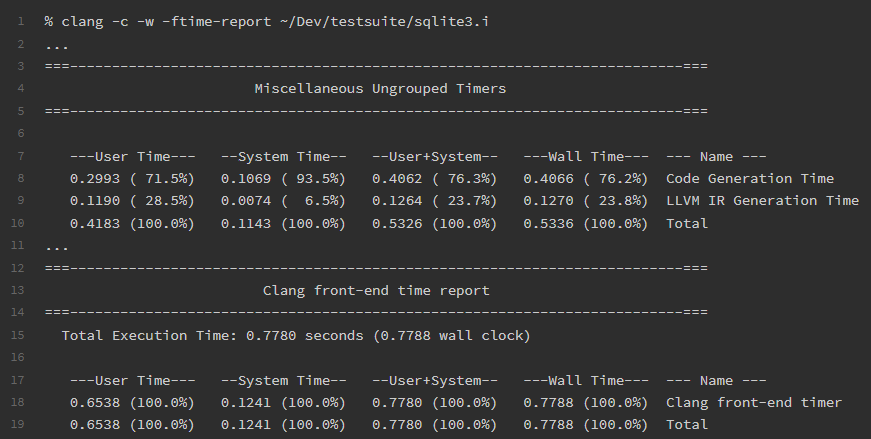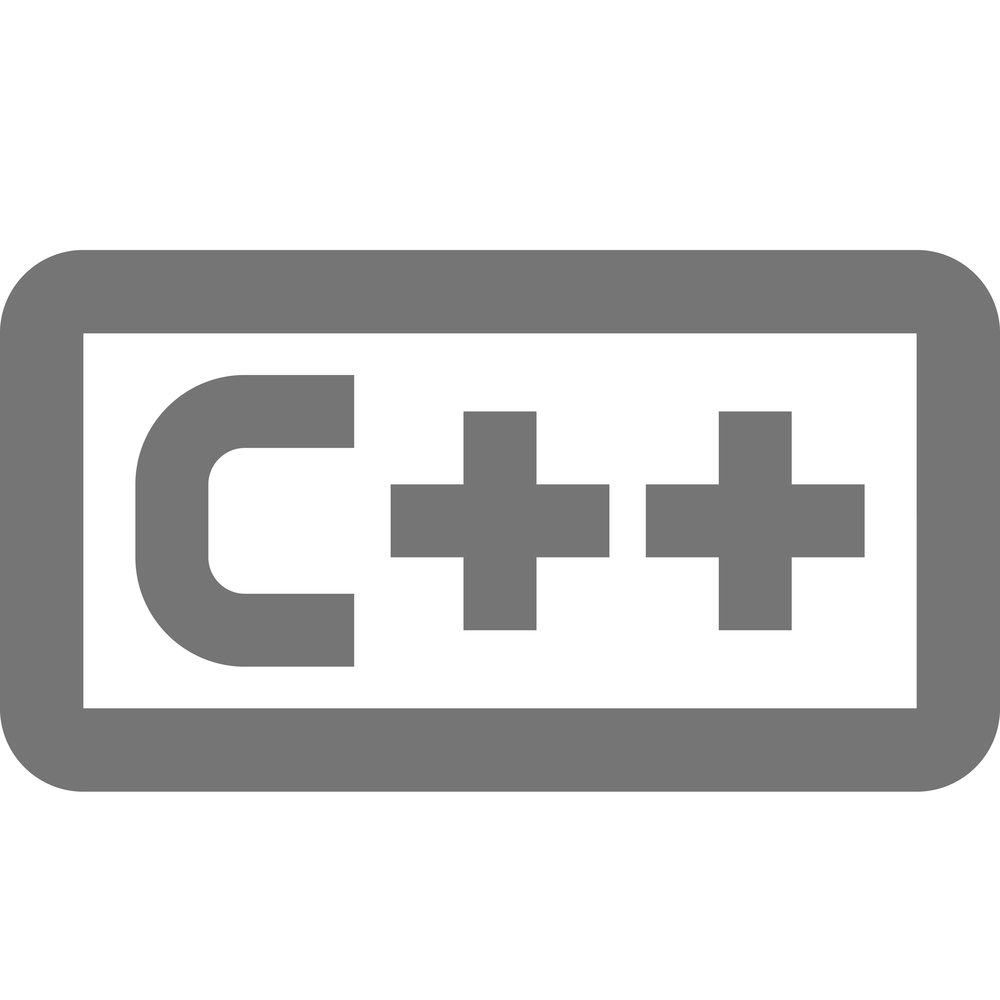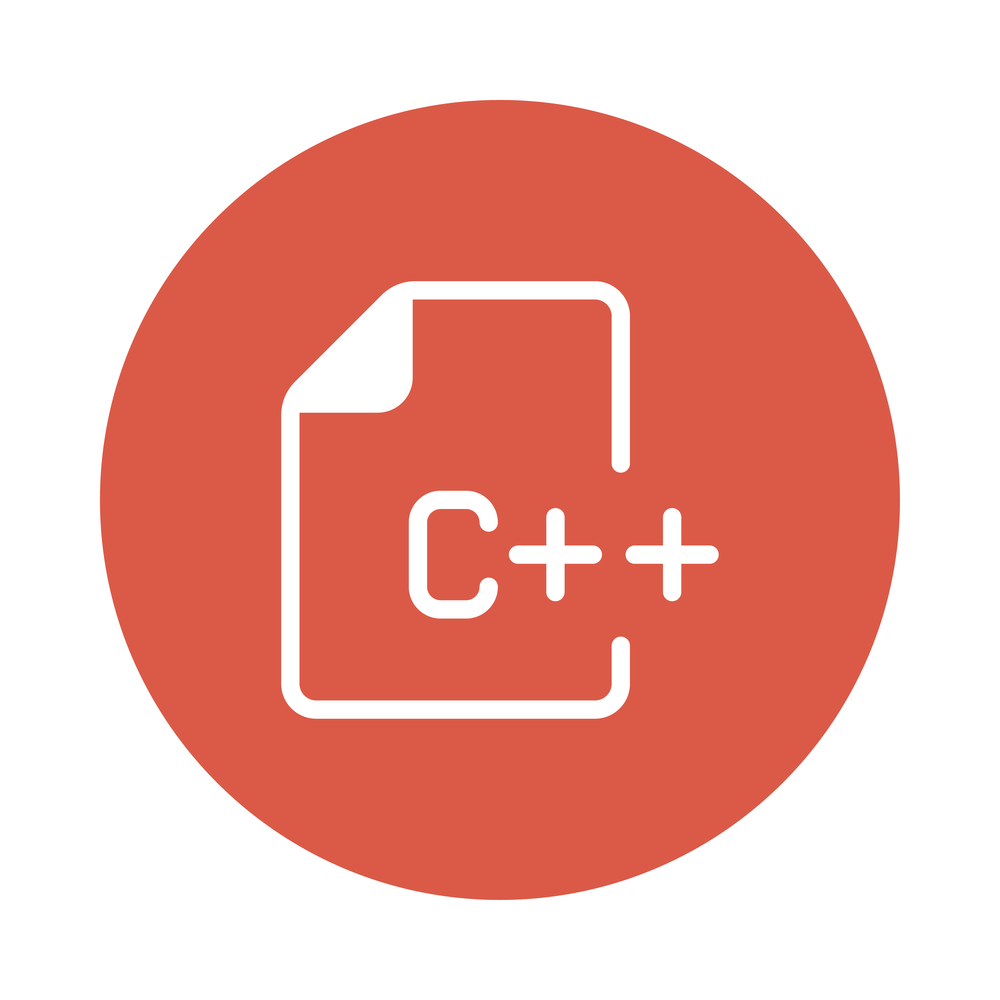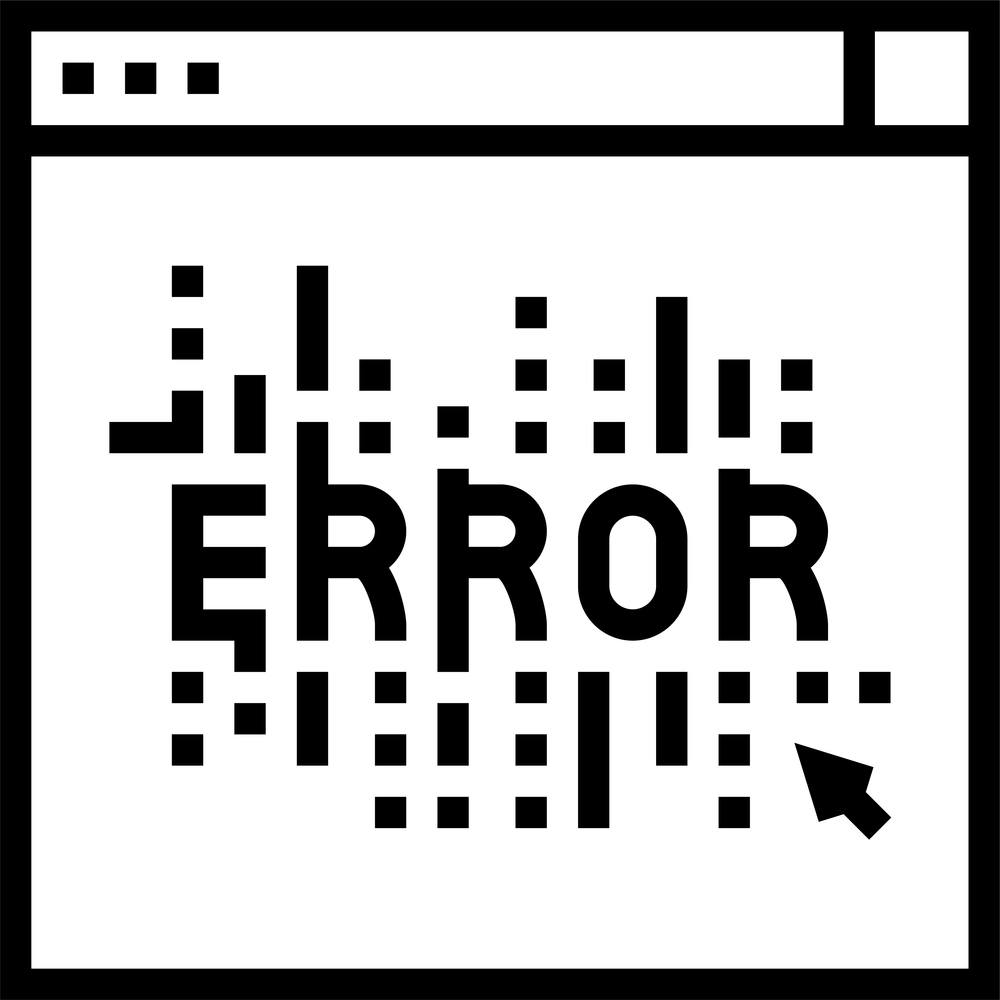Understanding and Improving Clang -ftime-report -- Fangrui Song
Clang provides a few options to generate timing report. Among them, -ftime-report and -ftime-trace can be used to analyze the performance of Clang's internal passes. This post focuses on the traditional -ftime-report, which uses a line-based textual format.
Understanding and Improving Clang -ftime-report
by Fangrui Song
From the article:
The output consists of information about multiple timer groups. The last group spans the largest interval and encompasses timing data from other groups.
Up to Clang 19, the last group is called "Clang front-end time report". You would see something like the following.
The "Clang front-end timer" timer measured the time spent in clang::FrontendAction::Execute, which includes lexing, parsing, semantic analysis, LLVM IR generation, optimization, and machine code generation. However, "Code Generation Time" and "LLVM IR Generation Time" belonged to the default timer group "Miscellaneous Ungrouped Timers". This caused confusion for many users. For example, https://aras-p.info/blog/2019/01/12/Investigating-compile-times-and-Clang-ftime-report/ elaborates on the issues.


 C++26 will introduce a new concurrency feature called std::execution, or senders/receivers. Lucian Radu Teodorescu explains the idea and how to use these in detail.
C++26 will introduce a new concurrency feature called std::execution, or senders/receivers. Lucian Radu Teodorescu explains the idea and how to use these in detail. Static reflection is under consideration for C++26. Wu Yongwei demonstrates how to achieve reflection now and shows some examples of what C++26 might make possible.
Static reflection is under consideration for C++26. Wu Yongwei demonstrates how to achieve reflection now and shows some examples of what C++26 might make possible. The trick to understanding C++ compiler error messages is to focus on two things. First, look at the beginning of the error message, which tells you what went wrong at a very low level. Then skip over the intermediate errors that follow the chain of calls until you end up at the line of code that you wrote. That original line of code is the one that is leading the compiler to a bad place. After that, you sometimes get supplemental information that helps you understand the low-level error better.
The trick to understanding C++ compiler error messages is to focus on two things. First, look at the beginning of the error message, which tells you what went wrong at a very low level. Then skip over the intermediate errors that follow the chain of calls until you end up at the line of code that you wrote. That original line of code is the one that is leading the compiler to a bad place. After that, you sometimes get supplemental information that helps you understand the low-level error better. This article explores how C++20 concepts can replace CRTP when implementing static interfaces for a family of classes. By leveraging concepts, we achieve cleaner, more readable, and less error-prone code—provided you have access to C++20.
This article explores how C++20 concepts can replace CRTP when implementing static interfaces for a family of classes. By leveraging concepts, we achieve cleaner, more readable, and less error-prone code—provided you have access to C++20. Last time,
Last time,